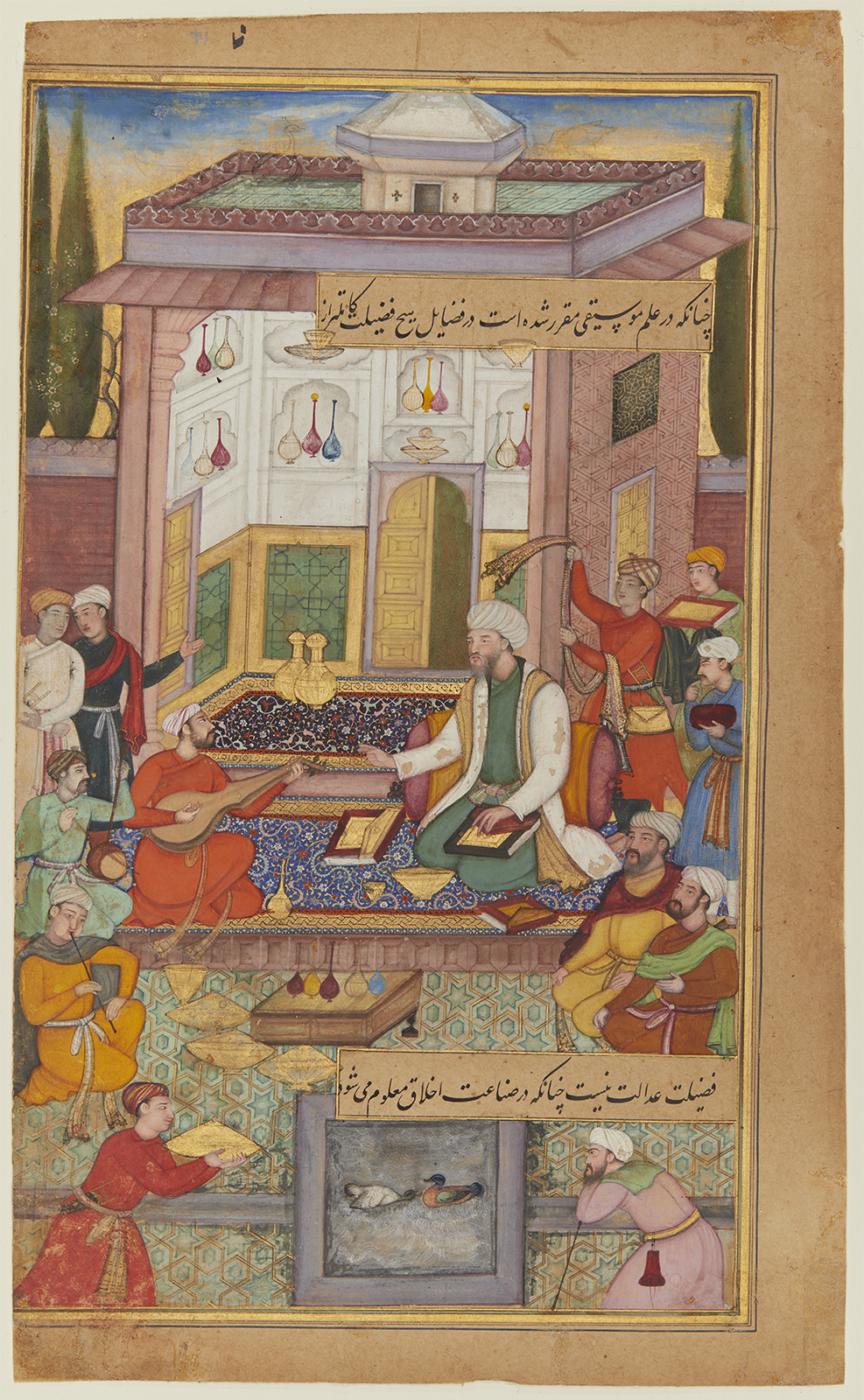Click on the image to zoom
Musical Entertainment, Folio from a manuscript of the Ethics of Nasir (Akhlaq-i Nasiri)
- Accession Number:AKM288.1
- Creator:Author: Nasir al-Din Tusi, Persian, 1201 - 1274
Created for: Nasir al-Din `Abd al-Rahim - Place:Pakistan, Lahore
- Dimensions:23.9 x 14.2 cm
- Date:ca. 1590-1595
- Materials and Technique:Opaque watercolour, ink and gold on paper
In an attempt to explain the superiority of justice to all other virtues in the First Discourse, Section 7 of his text, Nasir al-Din Tusi uses a comparison to the science of music. This has given the artist charged with illustrating this rather convoluted part of the text the opportunity to paint a gathering of men listening to a musical performance.
In the centre of this painting, a music master, kneeling with a book in his lap, directs musicians seated within an interior room in a palace; the master’s greater size denotes his higher status. Plaster niches in the walls of the iwan display perfume and rosewater sprinklers. In addition to providing decoration, these vessels may have served an acoustic function, enhancing the musical performance in progress. Akbar himself popularized the vessels by introducing to his court the Iranian Ab-i Pashan festival, during which courtiers sprinkle one another with rosewater in honour of life-giving rain.
See AKM288 for an introduction to a manuscript of the Ethics of Nasir (Akhlaq-i Nasiri) and links to the other paintings within this manuscript
Further Reading
According to Tusi’s text, “no relationship is nobler than that of equivalence as has been established in the science of music.” In the centre of this painting, a music master, kneeling with a book in his lap, directs musicians seated within an interior room in a palace; the master’s greater size denotes his higher status. Plaster niches in the walls of the iwan display perfume and rosewater sprinklers. In addition to providing decoration, these vessels may have served an acoustic function, enhancing the musical performance in progress. Akbar himself popularized the vessels by introducing to his court the Iranian Ab-i Pashan festival, during which courtiers sprinkle one another with rosewater in honour of life-giving rain.
The painting of musical entertainment is attributed to Gang Singh, whose name is found on other Mughal royal manuscripts from the mid 1580s until 1604.
— Filiz Çakır Phillip
References
Canby, Sheila. Princes, Poets & Paladins: Islamic and Indian Paintings from the Collection of Prince and Princess Sadruddin Aga Khan. London: Trustees of the British Museum, 1998. ISBN:9780714114835
Welch, Anthony, and Stuart Cary Welch. Arts of the Islamic Book: The Collection of Prince Sadruddin Aga Khan. London / Ithaca, NY: Cornell University Press, 1982. ISBN: 9780801498824
Note: This online resource is reviewed and updated on an ongoing basis. We are committed to improving this information and will revise and update knowledge about this object as it becomes available.


